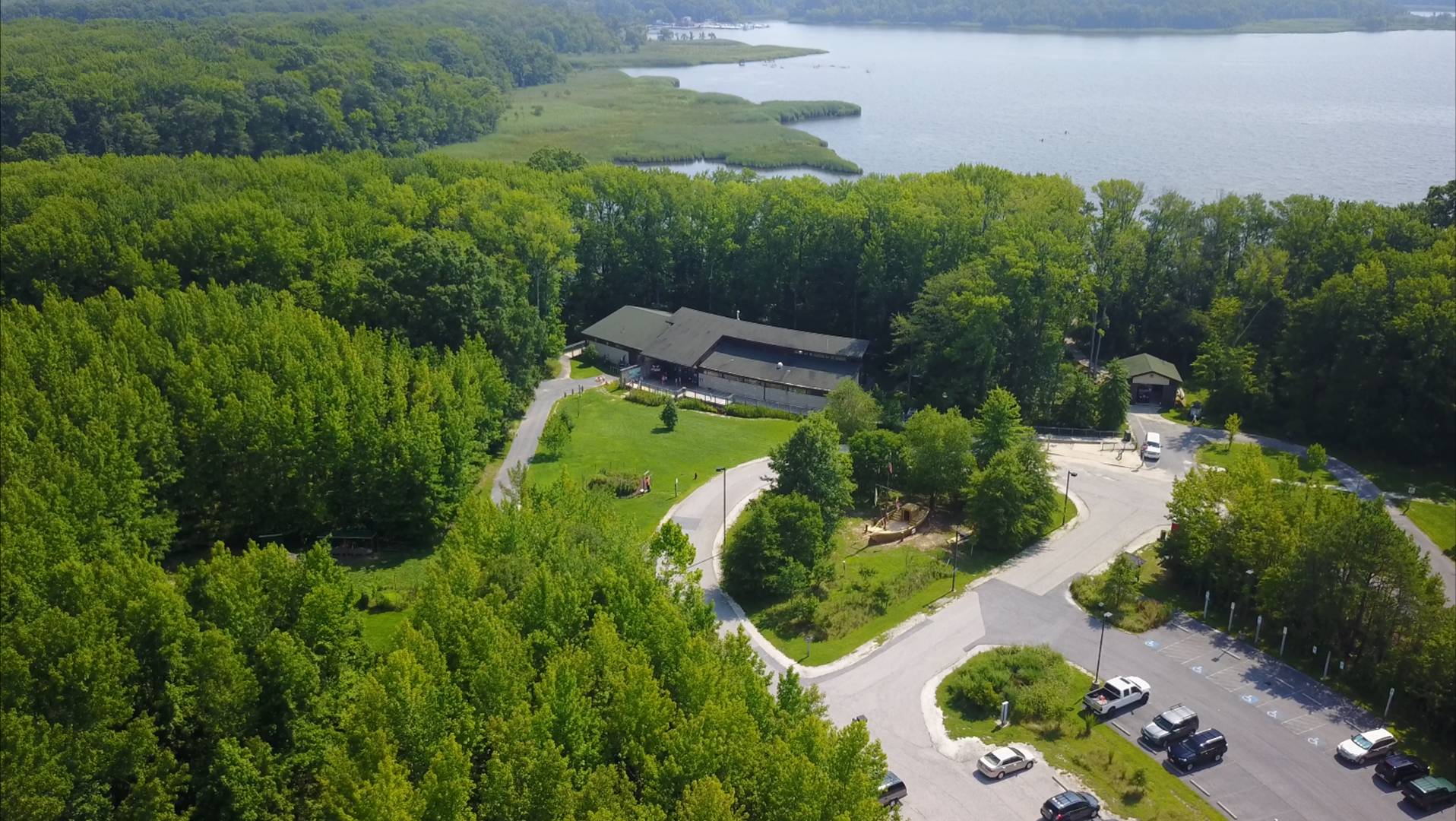For those of us that live close to the Chesapeake Bay and its tributaries, the return of ospreys each year in March is one of our region’s most recognizable and loudest signs of Spring.
Their loud, shrill calls begin as they set up territories, find mates, and build nests. Ospreys are unique among raptors (birds of prey)—eating a diet that consists almost entirely of fish, and having a number of interesting adaptations for their piscivorous (fish-eating) lifestyle.
Ospreys are recognizable in flight by their arched wings, and are unmistakable when they make spectacular feet-first dives to catch fish. Once they grab a fish, their sharp talons and large, rough feet make sure it doesn’t slip away. They almost always fly with a fish pointing head first—the most aerodynamic way to hold it. Ospreys are also more successful that most human fishermen and average about one fish every four dives.
Male and female ospreys are similar in appearance but can be told apart, especially among breeding pairs. As with most other birds of prey, the female is noticeably larger than the male. The slimmer male has narrower wings and lacks the brown spotted chest that is usually apparent on females.
Ospreys are among the most widely distributed of all birds of prey; they are found on every continent except Antarctica. In the Chesapeake, ospreys can be observed from March through early Fall and they readily nest on a variety of man-made structures. These include platforms constructed just for the birds—like the one visible from the boat dock at Marshy Point—to locations such as channel markers, pilings, and telephone poles. After nesting season, they make a long migration to Florida, the Caribbean, and South America for the Winter.
At Marshy Point, our nest platform is on its third season with what is probably the same pair of ospreys. In their first year on the platform, the birds built a nest but were not successful. The second year, they raised and fledged two chicks. This year, as of now, they have three eggs.
You can keep up with our Marshy Point ospreys by visiting the dock to see the platform, visiting the Nature Center to view the nest on camera, or watch from home at: www.marshypoint.org/learn-more/dundee-creek-cam/

